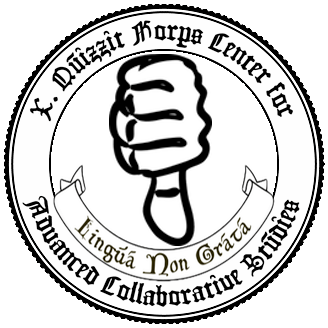



In a previous article I introduced a new mechanism of language death: that by which languages actively reject their speakers, rather than the other way around. I presented five case studies showing that this rejection is actually quite common.
Since the publication of that article, I have discovered a number of additional examples of this phenomenon, and I summarize them here for those who, like me, crave a deeper understanding of how (and why) a language may refuse to permit its own transmission.
Kih Lurty is a language once spoken by a few tens of thousands of speakers, but now on the verge of extinction. At the height of the language’s popularity, the native Kih Lurty ethnic group made up only about thirty to forty percent of the speaker population, the rest were immigrants, many very recent immigrants.
An important feature of the language, previously unknown to language science, are histemes, which are verbal particles that, through a still poorly understood mechanism, are biologically active. Speakers with different blood types, for example, must use distinct, biologically compatible histemes, or suffer an allergic reaction to speaking the language.
Under the immense adaptive pressure of so many recently transplanted speakers, Kih Lurty underwent a sudden bio-
Mik Gerk is a family of related dialects in use by a dwindling and increasingly disheartened number of speakers. One of the more common dialects of Mik Gerk has unexpectedly become a partial effiolect
This is a marginal instance, as it appears actually to have been an inadvertent rejection of speakers by a language that was stubbornly trying to achieve some other, essentially selfish, aim.
Zaks was split into strongly differentiated Northern and Southern dialects, which bordered each other along an apparently random line in a topologically featureless region. On May 2, 1958, the Northern and Southern dialects abruptly began to refuse to share lexical innovations across the dialect boundary line. Each Dialect innovated vocabulary within a unique, non-
Beginning in the 1930’s, speakers of Himing Wei were aghast to discover that their language was resisting the construction of complex sentences. Although they tried to continue using complex constructions and embedded clauses, the language eventually lost these features entirely, and speakers were forced to resort to short, choppy sentences with little adverbial adornment. Speakers’ frustrations grew when the language began to reject clauses which did not mention Spanish bars. Finally, when Himing Wei began to accept “Nick” as the only permissible name for any human being, speakers were forced to abandon it in large numbers. Today the only speaker is a lonely fisherman who has gone years without catching a fish.